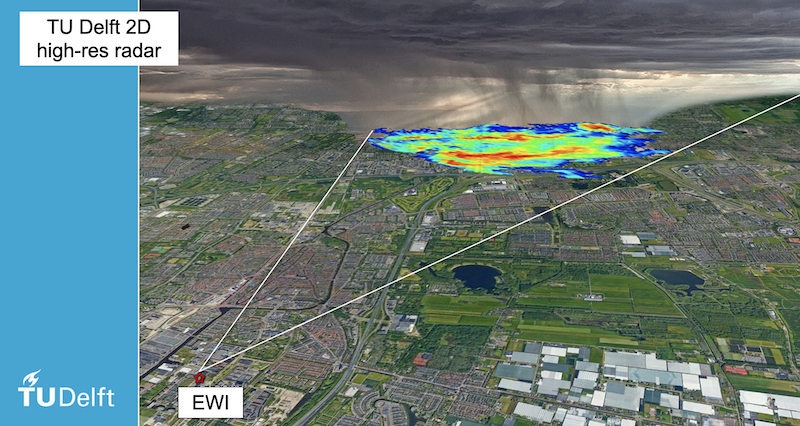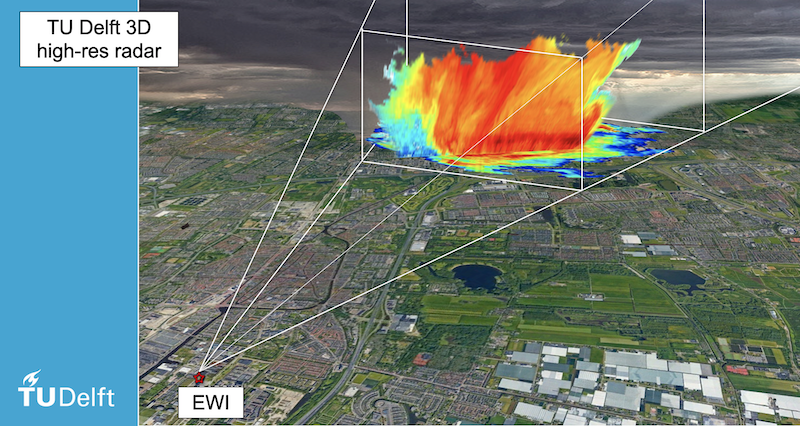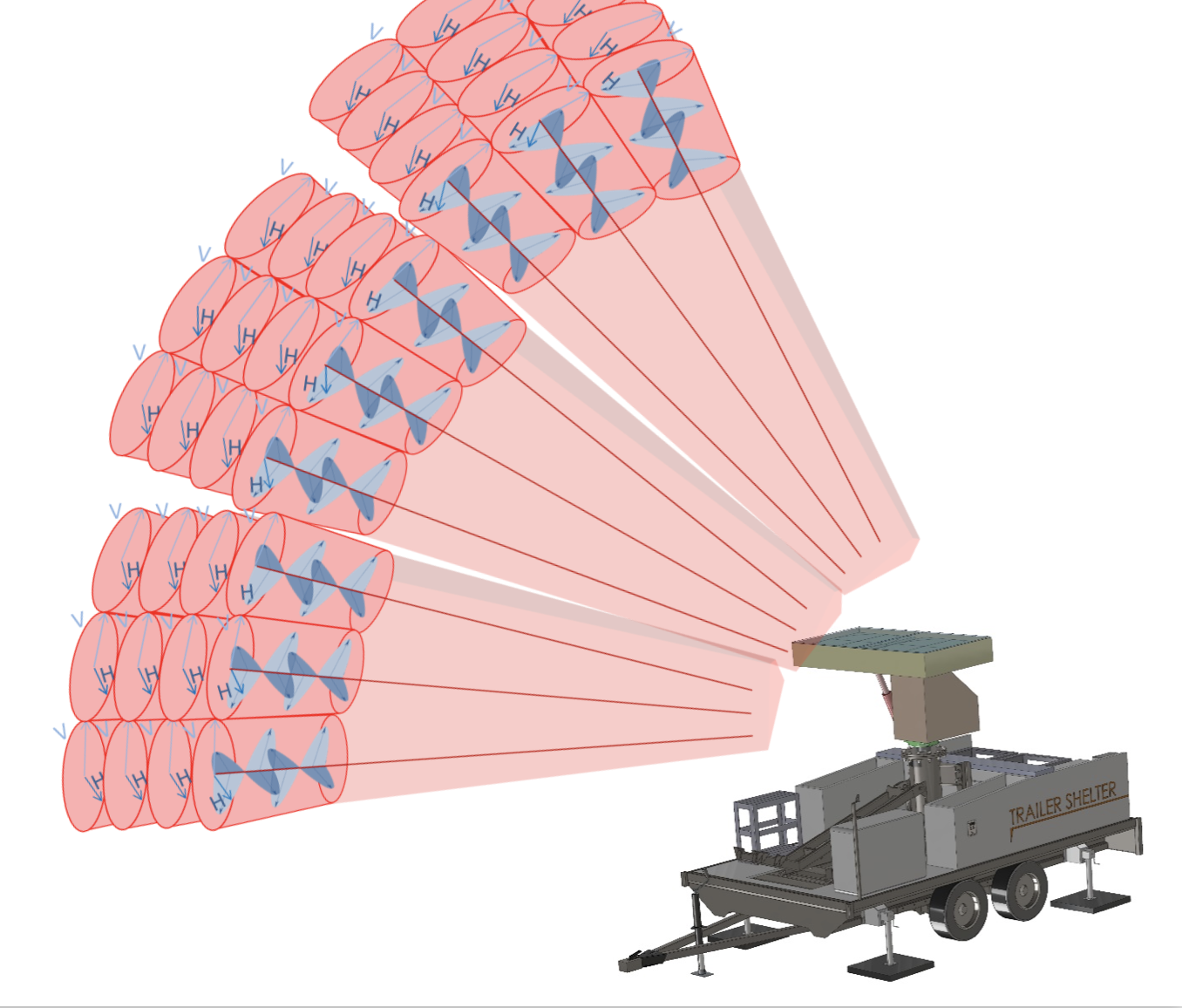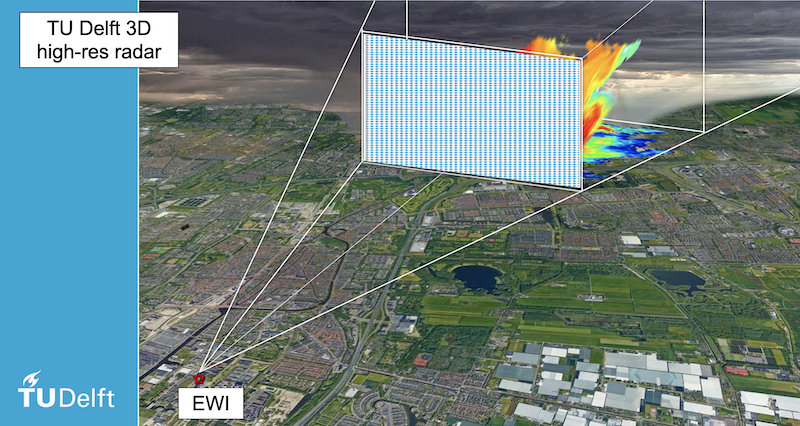ScIENCE & ENGINEERING
First of its kind
As the climate changes, so does our everyday weather, with an expected increase in dangerous conditions such as extreme heat, drought, heavy rainfall and thunderstorms together with heavy wind gusts, and higher river discharges. To understand, predict, and adapt to global warming we most urgently need more insight into microphysical processes going on inside clouds and below them (precipitation). Thereto, advances in measurement facilities are required to obtain the currently lacking necessary high-resolution data covering both long timescales and large areas such as whole clouds or weather fronts .
PHARA will bring innovative capabilities through novel concepts and technological development of polarimetric antenna arrays, microwave circuits and digital signal processing, hence develops and realizes a first-of-its-kind research infrastructure: a fast-scanning phased-array radar in Ku-band with polarization diversity.
PHARA innovations
- Polarimetric waveform agility
- Multi beam management
- Agile beamforming and scanning for 3D imaging
- Multiple mode operation (cloud mode, precipitation mode)
- Integration of multi frequency radars
- Ku-band waveforms


Beyond combining two concepts
PHARA combines the technology of phased array radars and radar systems with polarization diversity. Polarization diversity is extremely important for weather radars to reveal information about the shape, orientation, and phase of clouds and other hydrometeors, whereas phased array radars can provide simultaneous measurements of the atmosphere in multiple directions. PHARA goes beyond combining these two concepts to provide multiple-beam observation of the atmosphere with a ten times higher update rate, while keeping both range and Doppler resolution. This allows accurate monitoring of the dynamics of rapidly evolving cloud and precipitation systems. By using Ku-band PHARA will bridge the gap in observation between traditional precipitation radars and cloud profilers and provide data highly demanded both for cloud physics and precipitation analysis.
Solving the cloud mystery
PHARA is expected to provide atmospheric sciences with the much-needed measurement capabilities needed to overcome the scientific challenges faced in pursuit of our understanding of clouds and precipitation.


Solving the mystery of what exactly happens with particles in the clouds, how they develop themselves and grow into rain drops, requires advanced infrastructure as these processes are very detailed and on microphysical scales, and happen very fast, especially in severe weather conditions. PHARA can provide fast scanning rates, a 3D picture of the rain, and information on how the rain develops on different heights. These abilities will supplement the radar facilities of Ruisdael Observatory, and enormously impact fundamental atmospheric sciences and the more applied fields, such as weather forecasting, wave-based sensing, hydrology, water management and communication technologies. The technology will reveal how severe weather events evolve in time, and how the changing atmosphere is affecting our climate and consequently our living environment.

“This is a completely new way of looking at the atmosphere.”
HERMAN RUSSCHENBERG
